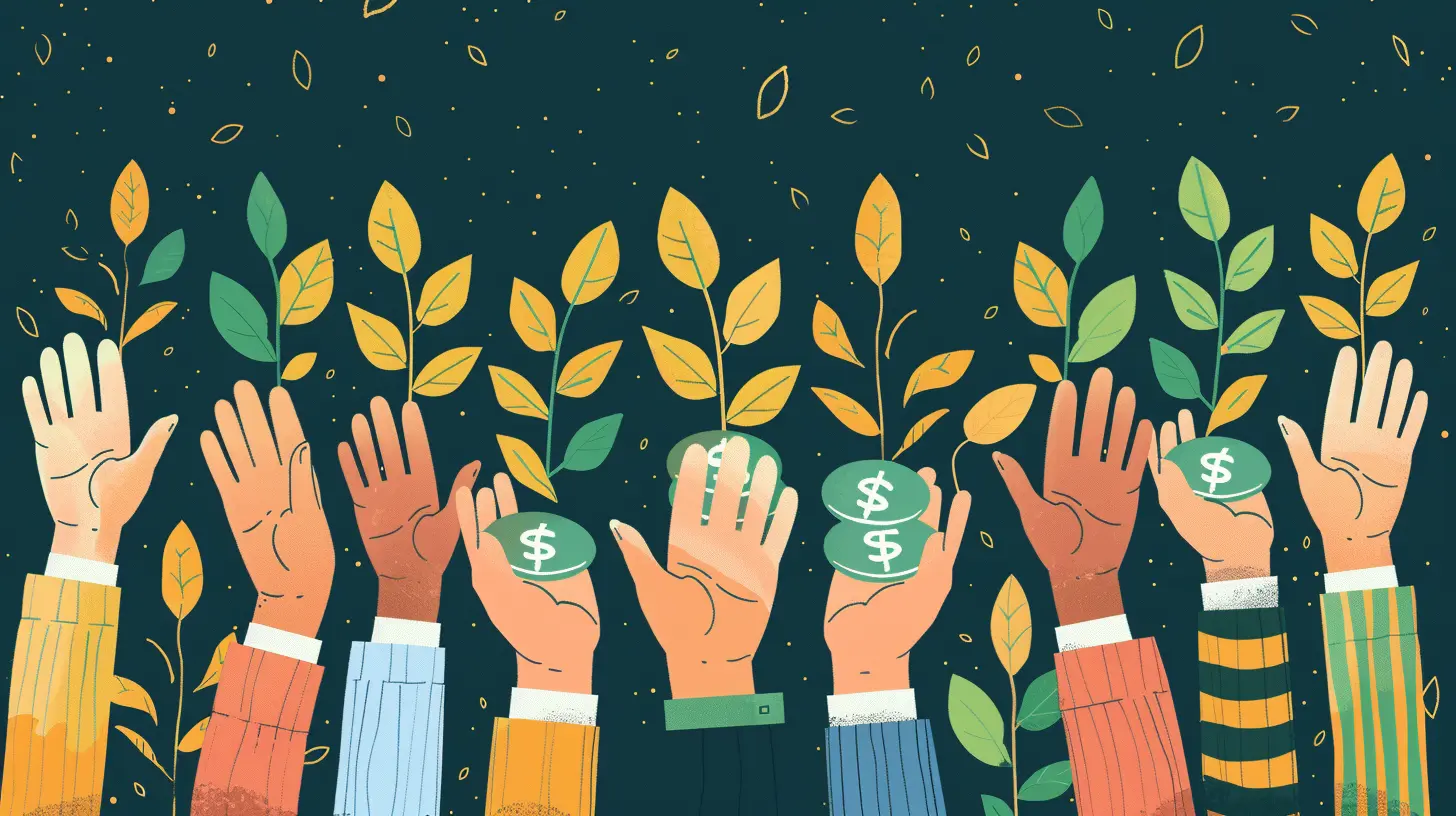Crowdfunding for Social Impact: How to Fund a Cause You Care About
18 August 2025
Ever felt that burning desire to change the world? Maybe you've seen an injustice that keeps you up at night or a community that desperately needs support. You're not alone. Many people want to make a difference but hit the same wall: funding. The good news? You're living in the age of crowdfunding—a powerful way to rally support and resources for causes close to your heart.
In this guide, we’ll walk through the exciting world of crowdfunding for social impact, step-by-step. Whether you're raising money to build a clean water well, support mental health programs, or fund educational scholarships, this article will show you how to launch a successful campaign that actually makes a difference.

What Is Crowdfunding for Social Impact?
Let’s break it down. Crowdfunding is basically collecting small amounts of money from a large number of people—usually online. For social impact? That’s using those funds to better the world in some way. We're talking about humanitarian aid, sustainability projects, health initiatives, and anything that helps communities thrive.Think of it as modern-day community fundraising, but supercharged by technology.

Why Crowdfunding Works for Social Causes
Crowdfunding taps into the human instinct to help. People love supporting projects when they can see the direct impact and feel emotionally connected. Unlike traditional funding routes (think: bank loans or grants), crowdfunding is personal, engaging, and often viral.Let’s face it—people are more likely to give when they feel a part of something bigger. When you share your story, your passion, and your cause, you create a ripple effect that brings in support from friends, strangers, and everyone in between.

Choosing the Right Platform
Before you put your idea out into the wild, you need to pick a crowdfunding platform—and yes, the choice matters. Different platforms cater to different needs.Here’s a quick lowdown:
- GoFundMe – Great for personal and charitable causes. It’s easy to use and very trustworthy.
- Kickstarter – More for creative projects, but can work if your cause has a tangible result (like a documentary or community product).
- Indiegogo – Offers more flexibility in funding models (keep what you raise).
- Chuffed.org – Built specifically for social enterprises and nonprofits.
- Fundly – Good for individuals, small nonprofits, and schools.
Take some time to check the fees, features, and reach of each platform. Some charge a percentage of your funds, while others ask for transaction fees. Make sure it aligns with your mission.

Crafting a Powerful Campaign Story
Here’s the truth: people don't fund ideas—they fund emotions. Your campaign story is the heart of everything. If it doesn’t hit home, your campaign won’t take off.Want people to care? Then make them feel something.
Tell Them Why It Matters
Your "why" is your secret weapon. Are you raising money for a school in a rural village because you studied there as a kid? Did you battle mental illness and now want to help others heal? Share it. Vulnerability draws people in.Show the Faces Behind the Cause
Put real people at the center of your story. Instead of saying “We’re raising $10,000 to help rebuild homes after a flood,” try this:"Meet Rosa. Her home was swept away in minutes during last month's flood. She’s a mother of three, and every day since, she’s been living in a school gym with her kids…"
Now you’ve got someone rooting for Rosa.
Use Visuals
Use photos and videos. A heartfelt video can skyrocket your campaign. People want to see who they’re helping, where their money is going, and what impact it will create. Make it genuine, not glossy.Set the Right Goal (And Break It Down)
Your funding target should be realistic and transparent. If your ask is too high, people might think, "They’ll never make it," and move on. Too low? Folks may think you're not serious.Make it clear where every dollar is going. For example:
- $5 buys a book for a child in need
- $50 covers mental health counseling for one person
- $500 helps build a clean water system
Give people a way to connect their donation to a direct outcome. It turns giving into a tangible act—like planting a seed and watching it grow.
Build A Buzz Before You Launch
This is one step many people skip—and regret later.Before you hit that "Go Live" button, build anticipation. Let your friends, followers, and community know what’s coming. Reach out to key supporters privately and ask them to be the first donors. When people see immediate momentum, they’re more likely to join the wave.
Leverage Your Inner Circle
Your family and friends are your first crowd. Ask them to share, donate, and rally behind you. They’re not just donating money—they’re investing in your passion.Partner Up
Look for influencers, bloggers, or organizations aligned with your cause. Even a small shoutout from someone with an engaged audience can bring in serious support.Use Social Media (But in a Human Way)
Don’t just post a link and disappear. Tell stories. Share behind-the-scenes moments. Thank early donors publicly. Use Instagram, TikTok, Facebook, Twitter—wherever your people hang out. And don’t underestimate the power of a heartfelt Instagram reel.Keep the Momentum Going
The first week is crucial, but you’ve got to keep the energy alive.Post Regular Updates
Let people know what’s happening. Share your progress, new challenges, success stories, and photos of impact. Updates remind people that you’re active, the cause is real, and their money is doing good.Say Thank You—Loud and Often
Gratitude is magnetic. People love being recognized. A quick shoutout on social media or a personal message goes a long way.Use Milestones to Celebrate
Hit 25% of your goal? Celebrate it! Halfway there? Let people know. These mini-goals keep donors engaged and motivate new ones to jump in.
Offer Rewards or Incentives (Optional but Powerful)
People love perks. Even a small thank-you card, a T-shirt, or a mention on your campaign page can make a difference. It adds value and shows appreciation.Make sure these incentives align with your cause. If you’re raising funds for clean energy, maybe offer eco-friendly gifts.
What If Your Campaign Doesn't Hit the Goal?
Here’s a reality check: not every campaign goes viral. And that’s okay.You can still make an impact with what you raise. Be transparent. Let your supporters know how you’ll use the funds—and keep building your community.
Failure isn't the end. It’s feedback. Use it to improve your next campaign.
Successful Social Impact Crowdfunding Examples
Let’s look at a few campaigns that nailed it:1. The Ocean Cleanup Project
They raised millions to build a system for removing plastic from oceans. Why it worked? A compelling mission, clear visuals, and data-backed results.2. Charity: Water
This nonprofit mastered storytelling. With vibrant videos and real-time updates, they showed every donation’s journey from wallet to water well.3. Brandon Stanton’s GoFundMe Campaigns
The "Humans of New York" photographer has raised millions for causes by sharing personal, intimate stories of people in need.What do they all have in common? Transparency, emotion, and trust.
Final Thoughts: Making Social Impact More Than a Dream
Crowdfunding for social impact isn’t just about raising money. It's about building movements, amplifying voices, and giving communities hope.You don’t have to be a celebrity or millionaire to change lives. With a story that matters, a little strategy, and a whole lot of heart, you can be the spark that lights up someone’s darkness.
So, what's the cause that’s tugging at your soul? Don't wait. Start crafting your campaign. Share your truth. And invite the world in.
You have the power to make change happen—one dollar, one story, and one supporter at a time.
all images in this post were generated using AI tools
Category:
CrowdfundingAuthor:

Julia Phillips
Discussion
rate this article
1 comments
Kayla Barrett
Empower change, fund hope!
September 10, 2025 at 4:50 AM

Julia Phillips
Thank you! Together, we can transform passion into action and create meaningful change.


